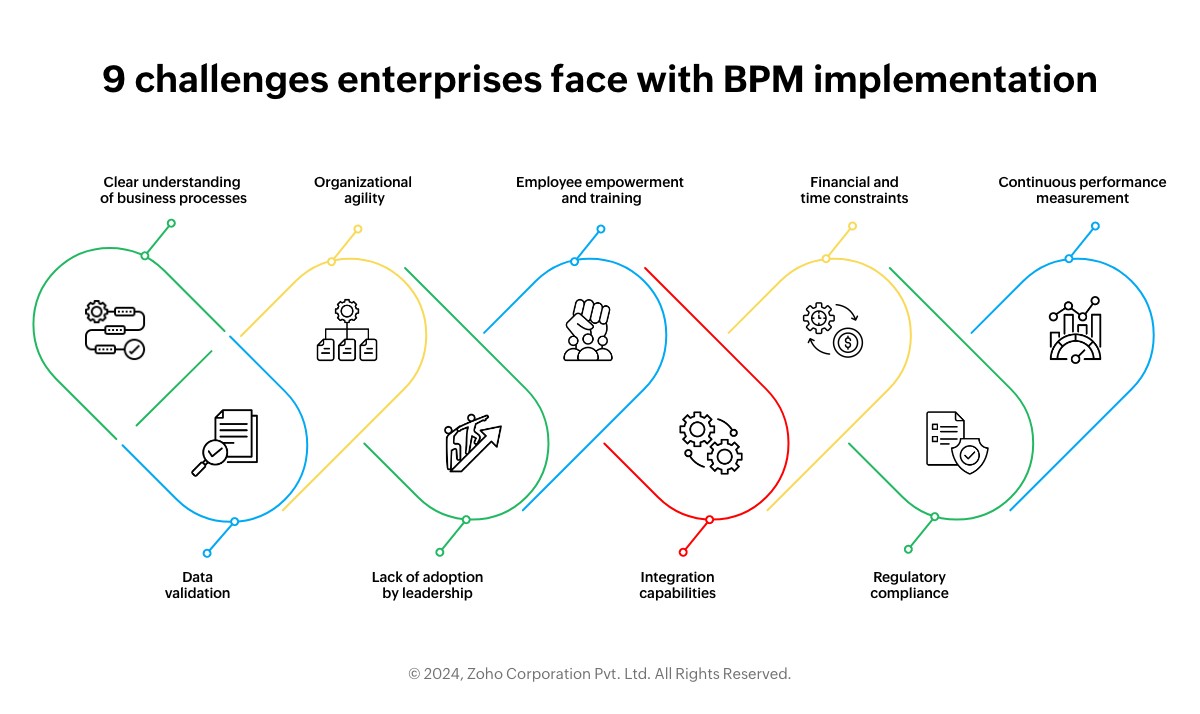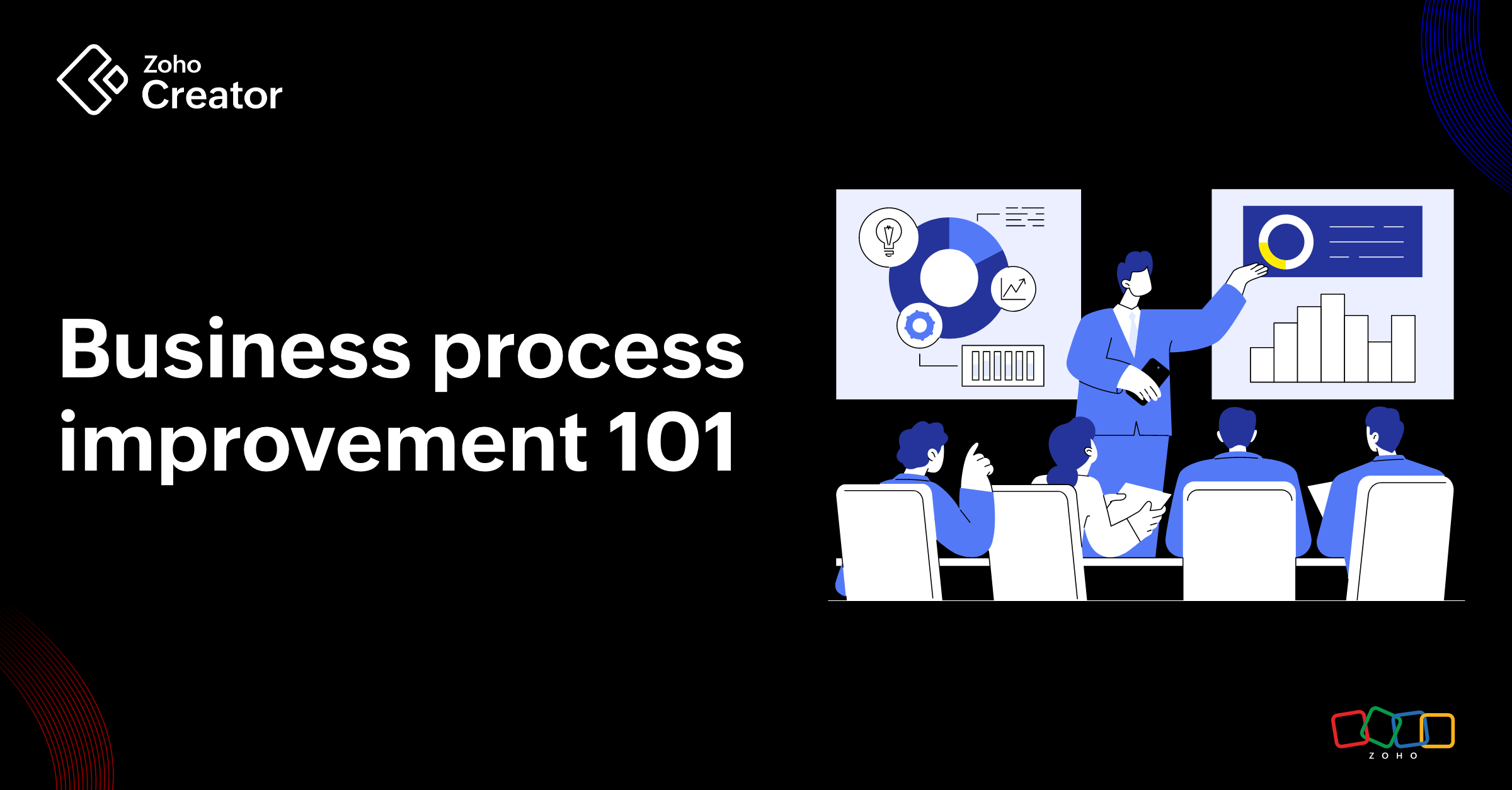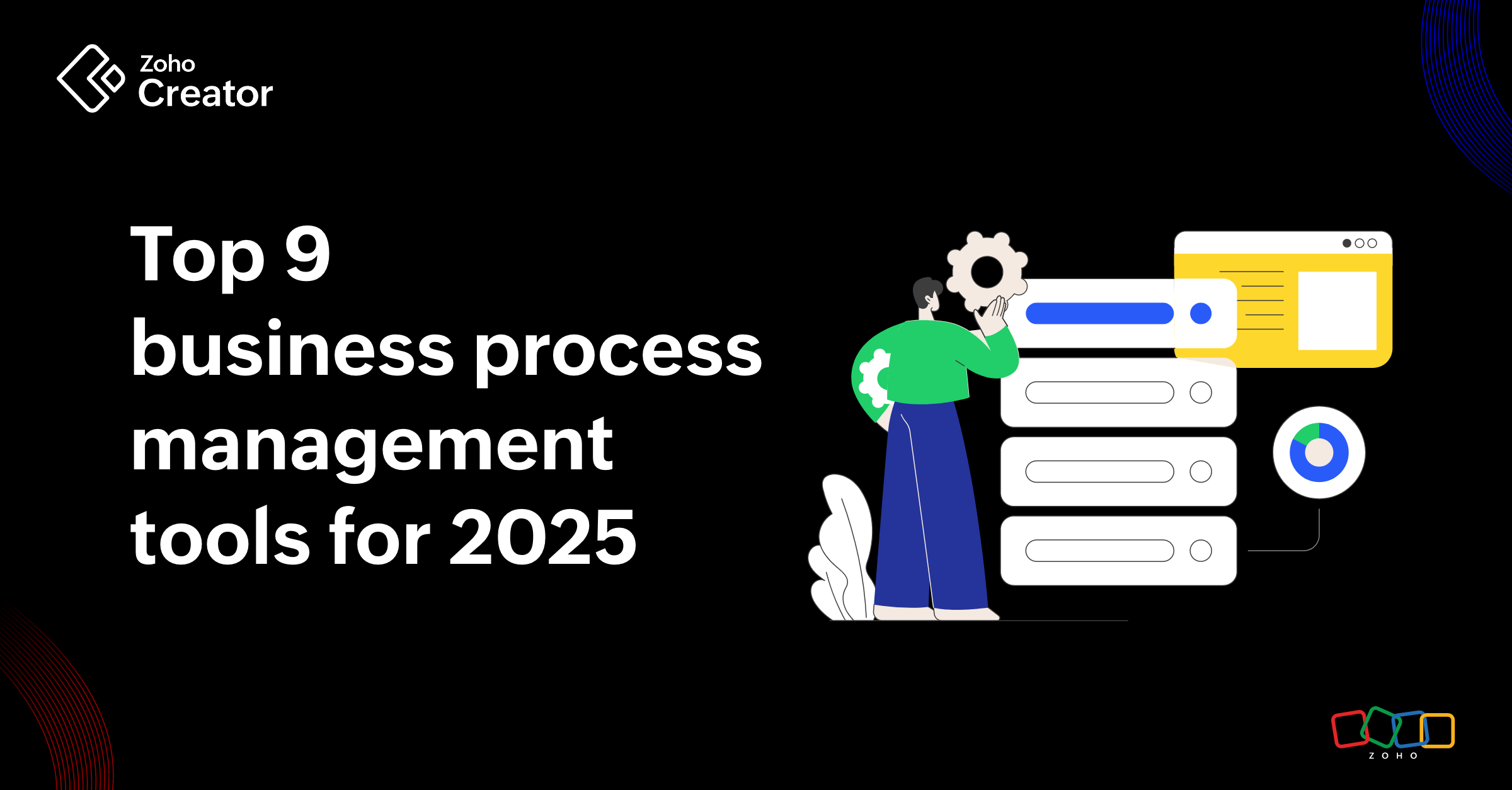- HOME
- Know Your Tech
- Top 9 business process management challenges—and how to simplify them
Top 9 business process management challenges—and how to simplify them
- Last Updated : December 27, 2024
- 13 Views
- 6 Min Read
Imagine being a product manager who wants to build a product that provides an amazing end-user experience. The best way to go about this is to get feedback from the end users about their experience with the product and then use that feedback to redesign and iterate the product to get it closer to the desired end state.
Now think of business process management (BPM) as a product that requires continuous monitoring and improvement. The ideal way is to involve both the technical team that implemented it and process owners—end users who are crucial for the business process execution. The feedback you collect here will help you deliver the BPM solution that's best for your business.
For instance, during business process execution, users might highlight that the applications' interface isn't friendly, making it challenging to navigate. On the other hand, the technical team might raise concerns with the process analysts about app speed or how certain features increase their workload unnecessarily. This helps businesses understand the on-the-ground reality and take appropriate actions to make their business process management more effective.
And even after that, it's still important for enterprises to review whether the solutions they implemented are delivering the expected benefits and simplifying the lives of the people involved in it.
That's why we're going to discuss the challenges enterprises face with BPM implementation and how they can overcome them using the right BPM tool—covering every aspect from operations to strategy and regulatory compliance.
9 challenges enterprises face with BPM implementation

1. Clear understanding of business processes
Many BPM solutions fail because enterprises lack a clear view of how specific operations are performed. Without this understanding, they might leverage tools that unintentionally slow down their processes, failing to deliver the expected outcomes and leading to wasted time and money.
Engaging with both the technical team—who are responsible for building the solution—and the process owners—who will be using it—ensures that you have better insight into your existing processes and workflows. Having a clear process flow will also help you choose the right tool for mapping business processes effectively and take measures that give the BPM a higher chance of succeeding.
2. Data validation
Enterprises often have to deal with large volumes of data, including both redundant and incorrect data. This can negatively impact tasks that rely on data accuracy and lead to poor decision-making.
Enterprises need to look for tools that are equipped with analytics and business intelligence capabilities that can provide valuable insights and help stakeholders conveniently access the data. These tools also help them automate data entry, segregate data into sections and sub-sections, and remove duplicate records.
3. Organizational agility
Organizations need to be agile and adaptive in every respect. When market changes occur, enterprises must react quickly and effectively.
This is why businesses should look for solutions that are easy to use, even for non-technical users, enabling them to quickly address issues and ensure smooth operational processes without bottlenecks.
4. Lack of adoption by leadership
In large enterprises, business units are often led by various leaders, which can result in a lack of alignment on the use of BPM tools. Steven Edmund, director at FlowsEasy, a Zoho Partner organization, put it well when he said, "When senior management doesn't buy in, there are going to be struggles."
To overcome these challenges, it's ideal for leaders to involve the process owners in the process modeling phase. Since they're the ones who will ultimately use the tool, it’s crucial to choose one that will help them manage their tasks effectively.
5. Employee empowerment and training
The success of enterprise BPM implementation depends on the people who use it. Traditionally, process owners rely heavily on IT teams to implement business process management systems. However, many enterprises use tools that aren’t user-friendly for non-technical employees, leading to increased reliance on IT teams, who are already burdened with their own tasks. This can slow down the processes for the business teams.
This is why enterprises need to choose BPM tools like cloud-based solutions with intuitive interfaces and provide training to help employees use them effectively. If a process is redefined, process participants should be able to make necessary customizations themselves. This reduces the reliance on IT teams and empowers business teams to handle the system independently.
6. Integration capabilities
Enterprises consist of departments like product, marketing, sales, and operations, each with its own unique needs. As these departments often rely on different apps to manage their business functions, it can lead to a disconnected ecosystem.
This is why it's essential to leverage tools that can seamlessly integrate with existing legacy systems and third-party software. By doing so, departments can break out of silos and create a connected ecosystem. For example, marketing can store lead details in one system and push them to sales through an integration with their CRM, enabling efficient workflow management.
7. Financial and time constraints
Often, there's a mixed mindset when choosing a solution—business owners wonder if opting for a lower-priced option will compromise quality and flexibility or if a higher-priced solution with more features will exceed the budget. This confusion distracts them from focusing on the end goal—ROI. On the other hand, building a fully tailored solution through a traditional approach is time consuming, leading to not focusing on functionalities and missing opportunities.
Businesses should focus on the "why" behind their solution choice, evaluating it based on its return on investment. Modern approaches, like low-code, help enterprises win in both cases—they can customize a solution tailored exactly to their needs and deploy it in less time and at a lower cost.
8. Regulatory compliance
Businesses often face challenges in maintaining compliance and regulatory standards. As data is stored and shared across different systems, there's often a risk of breaches, putting sensitive data at risk.
To avoid this, businesses must leverage BPM solutions with features like data encryption, access control, and regular audits. It's also crucial to ensure that the tools comply with relevant industry standards and regulations, such as GDPR or HIPAA. By doing this, they can protect data at all levels and build trust with clients and stakeholders.
9. Continuous performance measurement
Implementing BPM can be an overwhelming step for enterprises aiming for quick results. Systems need time to be properly tested and assessed on whether they can deliver the intended outcomes.
That's why enterprises should approach performance measurement as an ongoing process. A good approach is to optimize one process at a time, monitoring key performance indicators (KPIs) to achieve defined business outcomes. Based on these insights, businesses can then apply the same approach to other processes. This allows enough time for the system to adapt and understand the process, leading to better performance over time.
How low-code-powered solutions can enhance business process management
Businesses can develop and deploy their BPM software quickly, with little to no coding experience, using low-code platforms. These platforms help streamline processes, integrate with third-party software, enable cross-department collaboration, and adapt to changes easily.
To highlight how transformative low-code can be, here's a story of how one business utilized low-code to redefine their business operations.
The WCube success story
WCube is a B2B sourcing platform that provides over 16,000 IT products and office supplies to businesses across different regions. Managing such a large inventory while operating on a just-in-time (JIT) model created challenges for the company in ensuring data flow amongst stakeholders. To overcome these hurdles in their process lifecycle, the company sought a customizable BPM platform to simplify their workflows, manage their supplier portal and customer orders, and keep their operations running smoothly.
In search of a tailored solution, they stumbled upon Zoho Creator, a low-code app development platform. Using it, WCube developed Cube Ops, agile BPM software with dedicated modules—all designed to meet the unique needs of business managers in each department. The platform also integrates with third-party vendor systems and Zoho Books, enabling real-time inventory tracking, automated quotations, and efficient sales management.
Built in-house in just a month, Cube Ops has optimized their supply chain operations and enhanced decision-making. Using this solution, they achieved 2x monthly growth, a 25% boost in their productivity, and scaled daily transactions from half a million to millions. Read the full case study here.
Final thoughts
WCube’s story is a great example of how low-code platforms like Zoho Creator allow businesses to build BPM solutions that are customized to their needs—without the headache of complex traditional development.
Zoho Creator makes it simple to go from idea to app in no time. Whether you’re a business user or an IT professional, the platform’s visual interface and prebuilt components make it easy to turn complex processes into visual workflows that streamline processes and drive growth.
Want to see it for yourself? Take it for a ride, with our 15-day free trial, and start building smarter BPM solutions today!
 Syed Kamaluddin H
Syed Kamaluddin HSyed is a product marketer at Zoho Creator who is passionate about staying up-to-date with the latest trends in the industry. At work, he strives to promote low-code. Outside of work, Syed is a versatile individual who enjoys writing poetry in Urdu, exploring new destinations, and engaging in physical activities to maintain his health.



